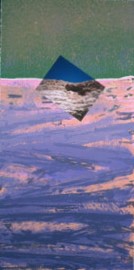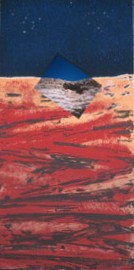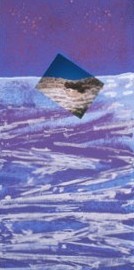


Introduction, by C. Edward Wall
Always stretching the boundaries of his work, Arthur Secunda
began experimenting in the late 1980s with crushed monoprints. He
found that if he cranked down the rollers on an etching press,
paper would build up and wrinkle under the rollers. Painting a
plate and printing it once with rollers properly adjusted so the
paper would not wrinkle, Secunda would then readjust the rollers to
intentionally wrinkle the work, which he would print again in its
wrinkled state. When the print was dry, he would stretch the work,
opening up the wrinkles to expose portions of the image that were
printed initially but were not printed during the second pass. The
resulting monoprints revealed texture, stratification, and rich
coloration closely reflecting the beauty and serendipity found in
nature.
Taking a break from his studio, Secunda and his photographer
friend, Eric Lawton, made a trip to photograph the cliff dwellings
at Camp Verde, Arizona. As Secunda was studying the resulting
photographs, he was struck by the texture and linear quality of one
of the images, recalling that the elements closely resembled those
in one of his monoprints. Superimposing the photograph on the
monoprint, the works merged perfectly, resulting in a very special
collage.
Secunda was inspired by the collage to create a suite of three
powerful prints, which reflect beliefs inherent to the
Enlightenment, the ideals of democracy, and the very essence of
Native American cultures - that to "live well" on earth, humankind
must vigilantly strive to establish, maintain, and protect the
lofty and often elusive values of freedom and justice as well as
that "special spirit," which causes humankind, in the first place,
to think, to reason, and, subsequently, to choose pursuit of
goodness and high values.
The central image in each print is a collaged photograph of a
cliff dwelling at Camp Verde. Those who occupied these dwellings
were agricultural peoples. They lived high on the cliff, literally
sheltered from sustained attack. Yet these peoples disappeared
without apparent reason; to this day, their disappearance is one of
the great mysteries in American archeology. In this context, To
Live in High Places also is a seminal reminder of the
importance of seeking understanding and implementing practices
requisite to preserving the life-sustaining capacity of Earth.
|






